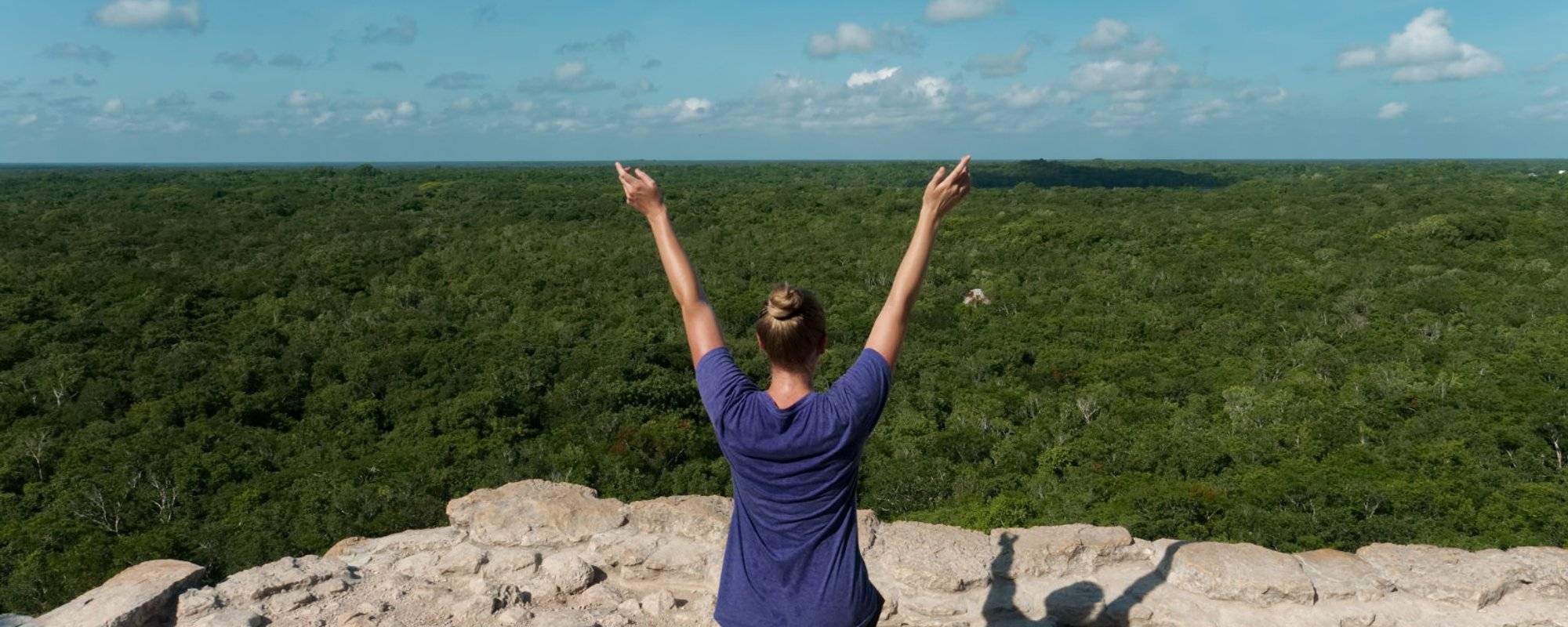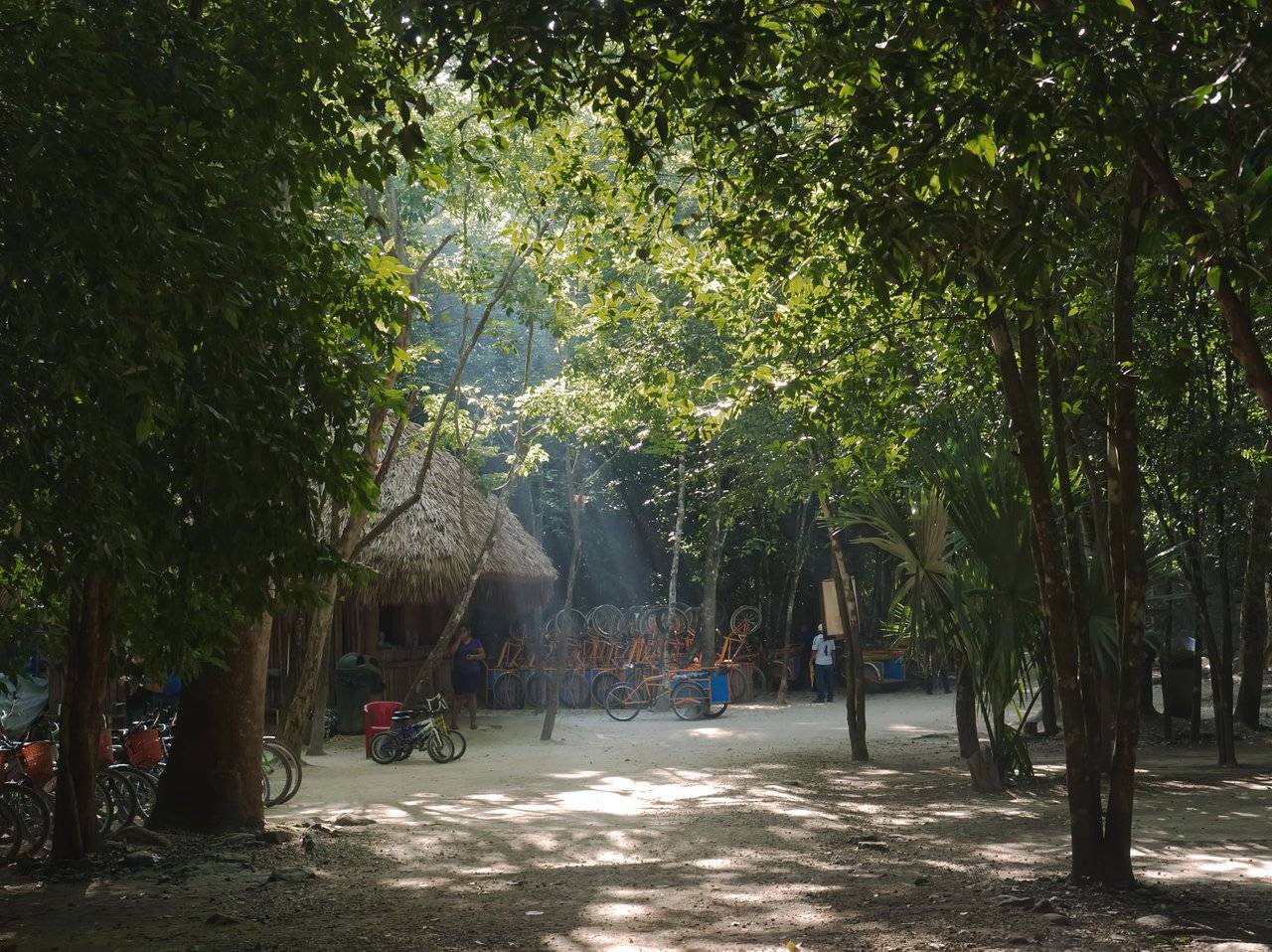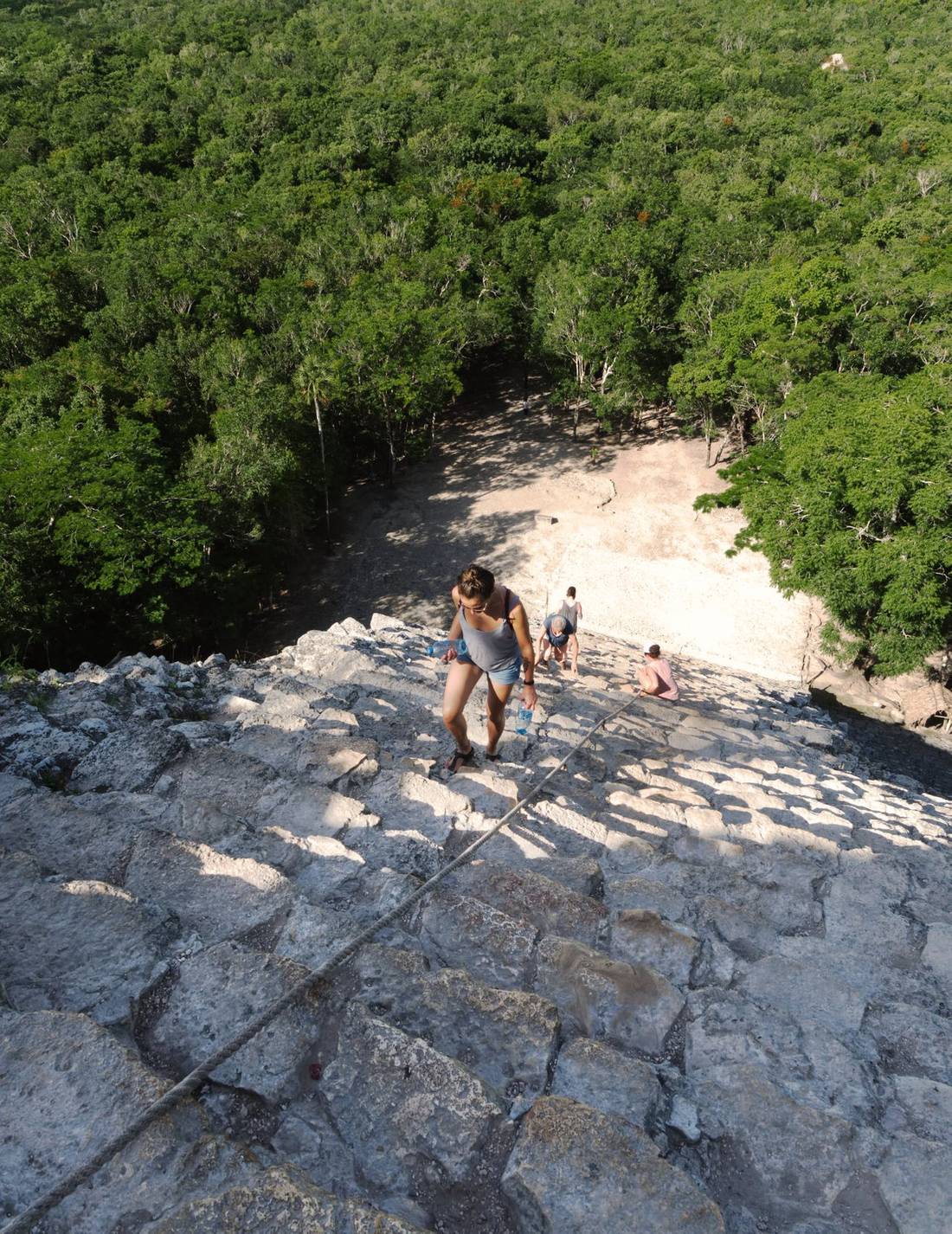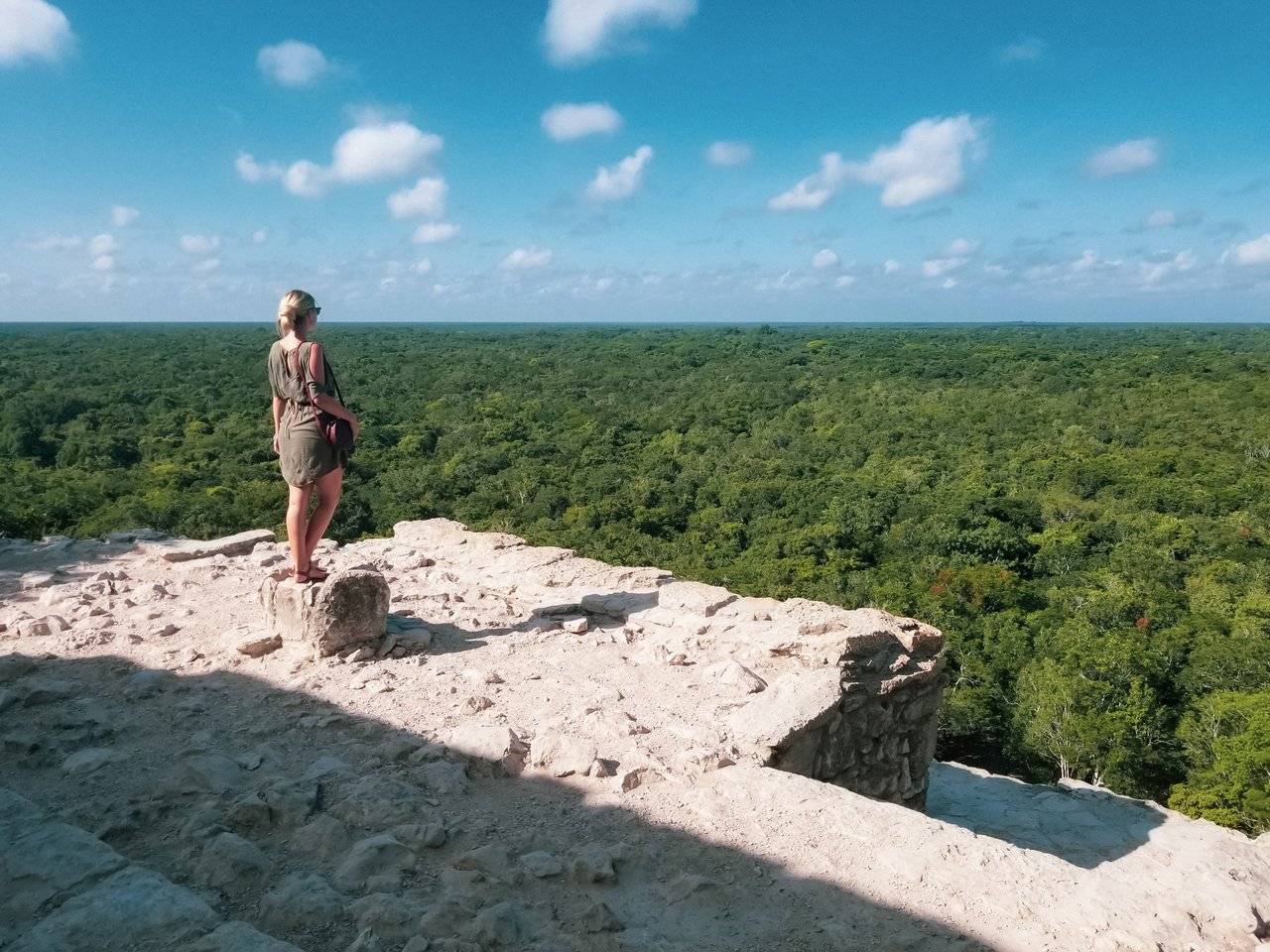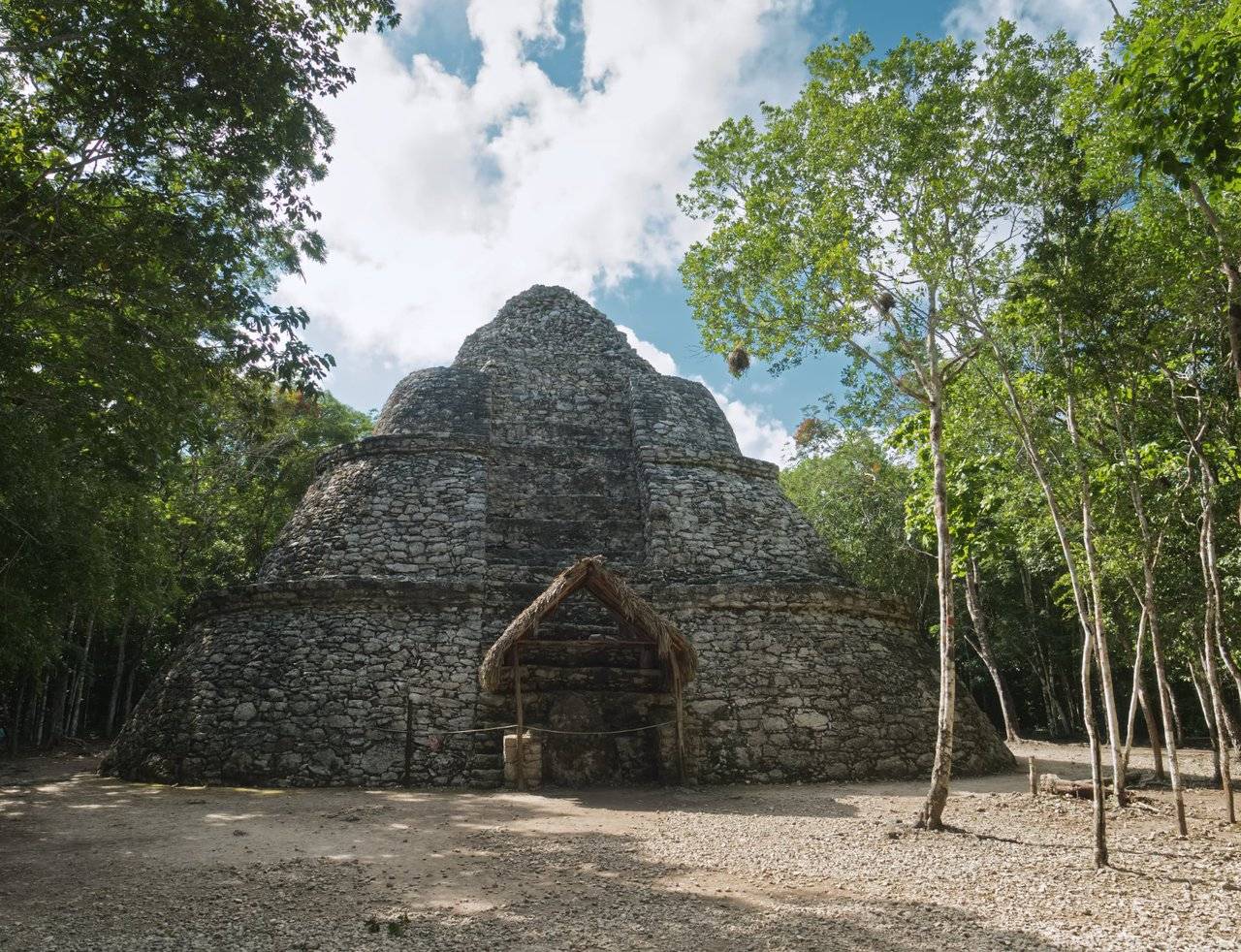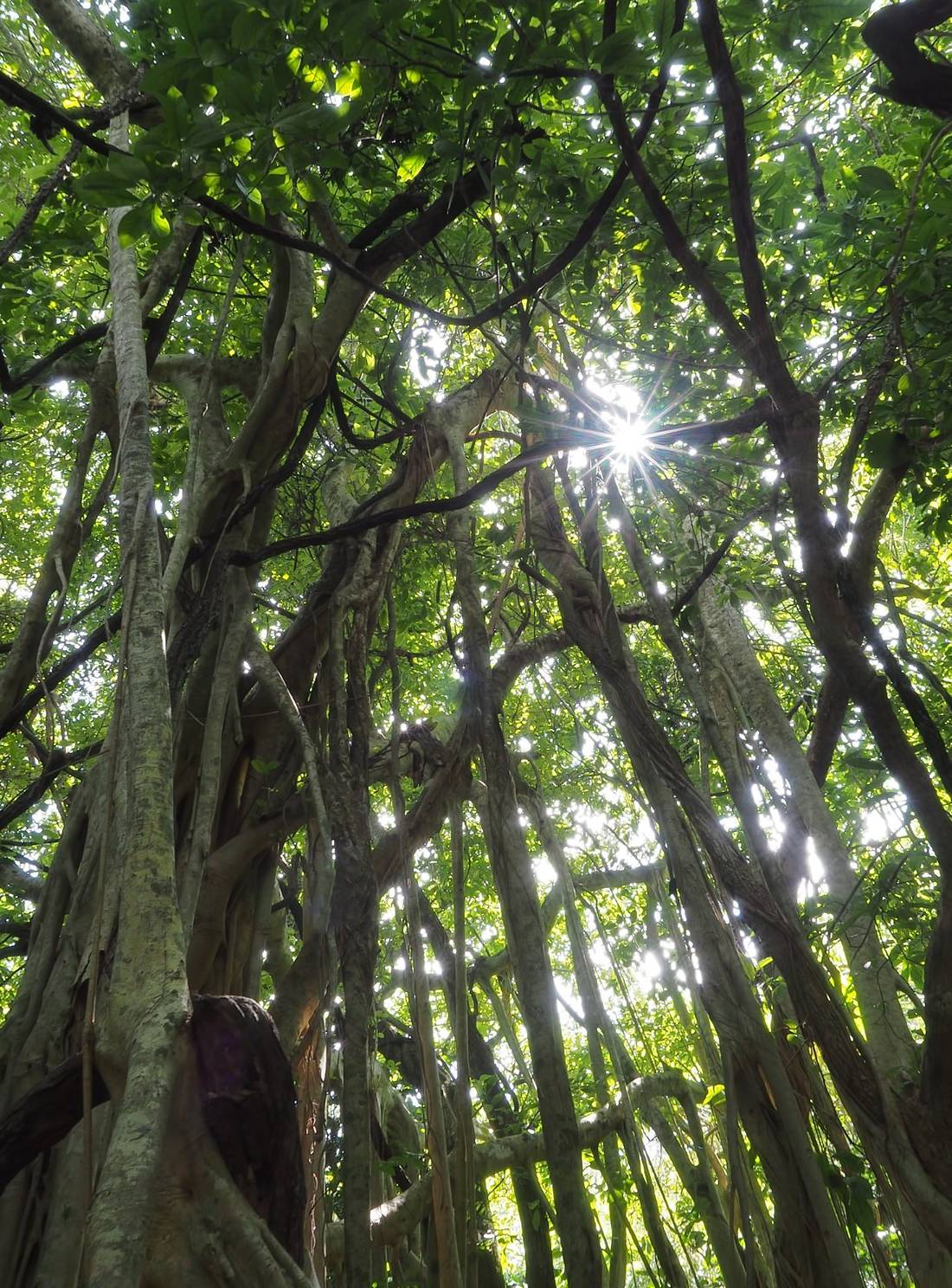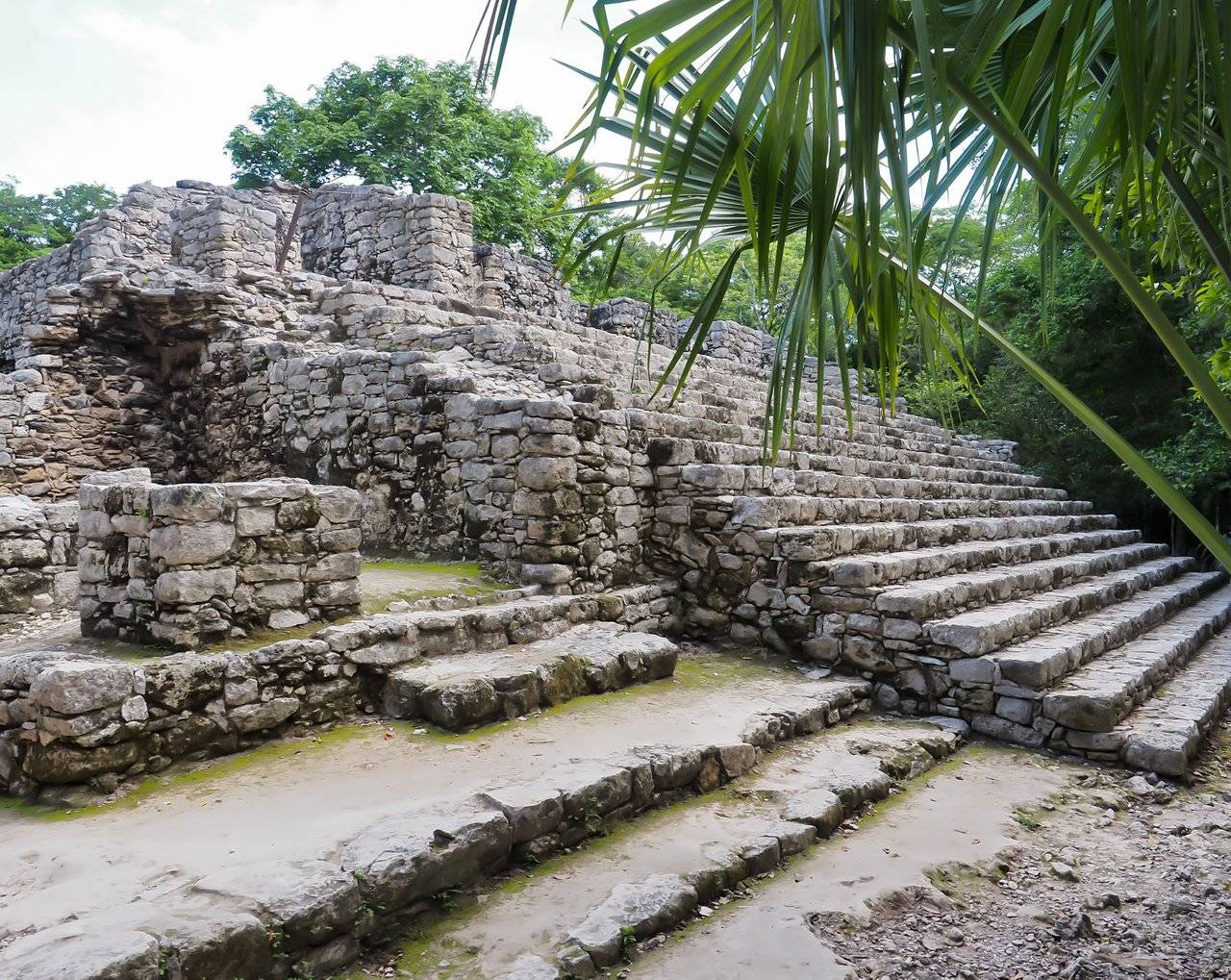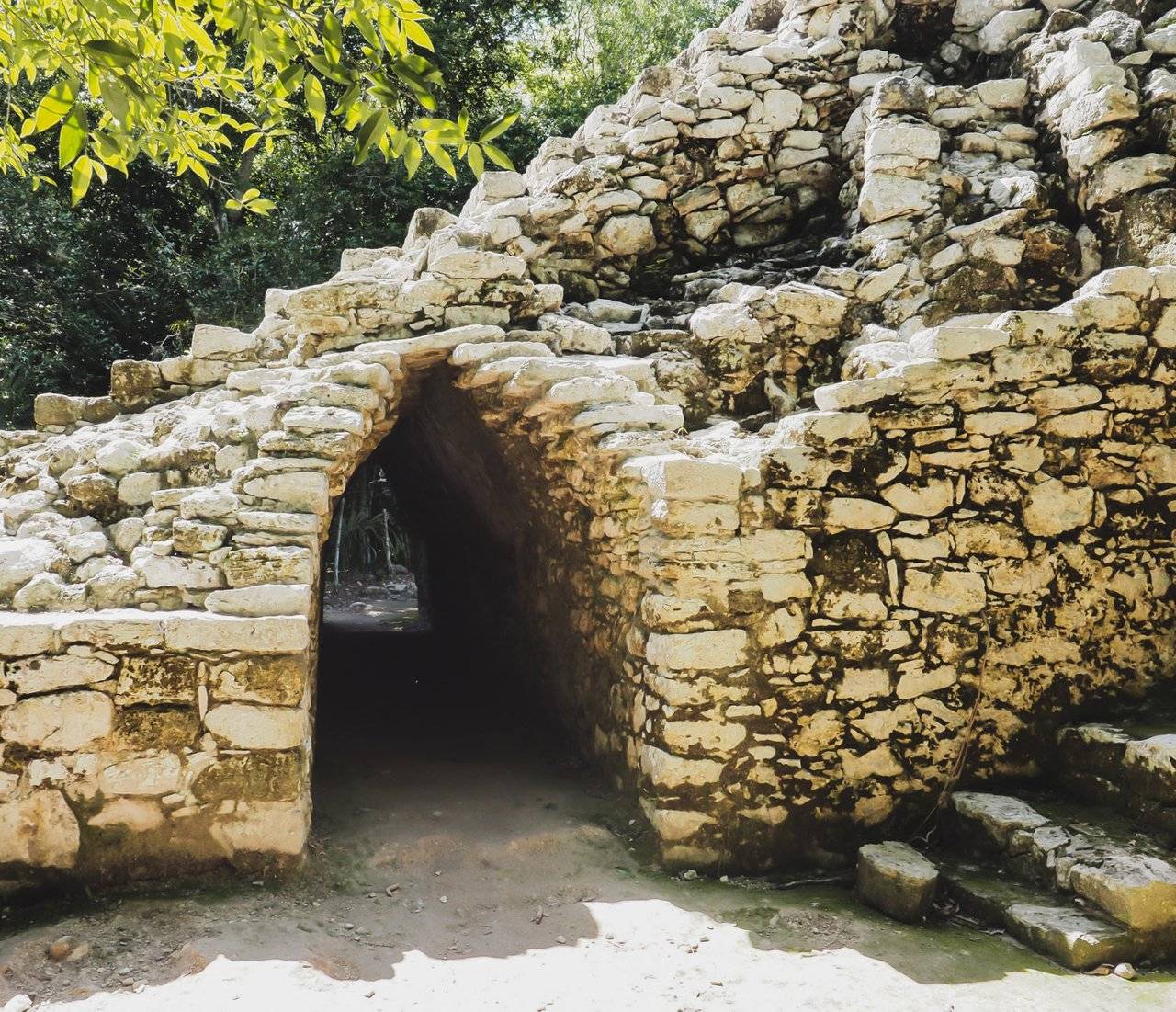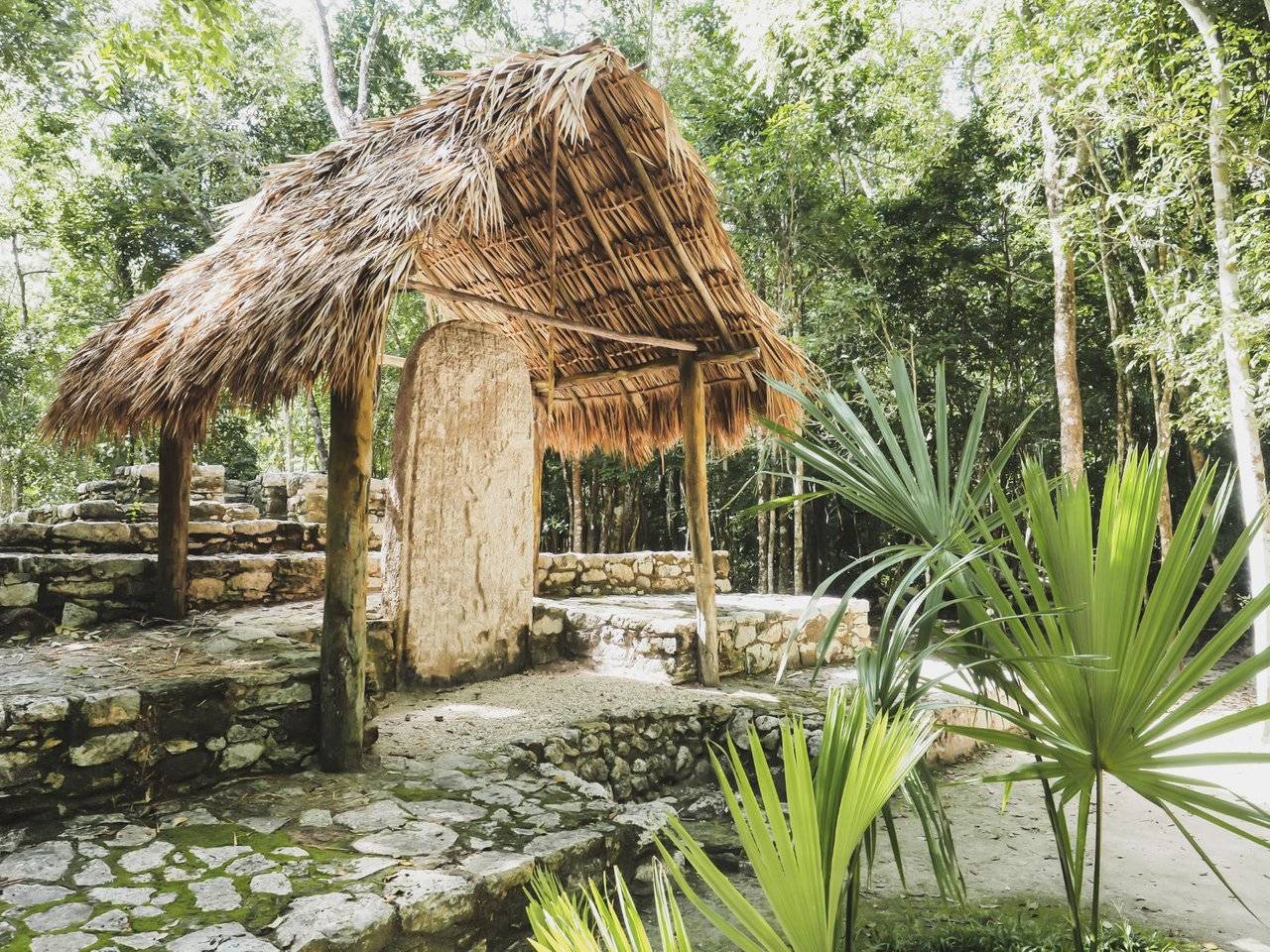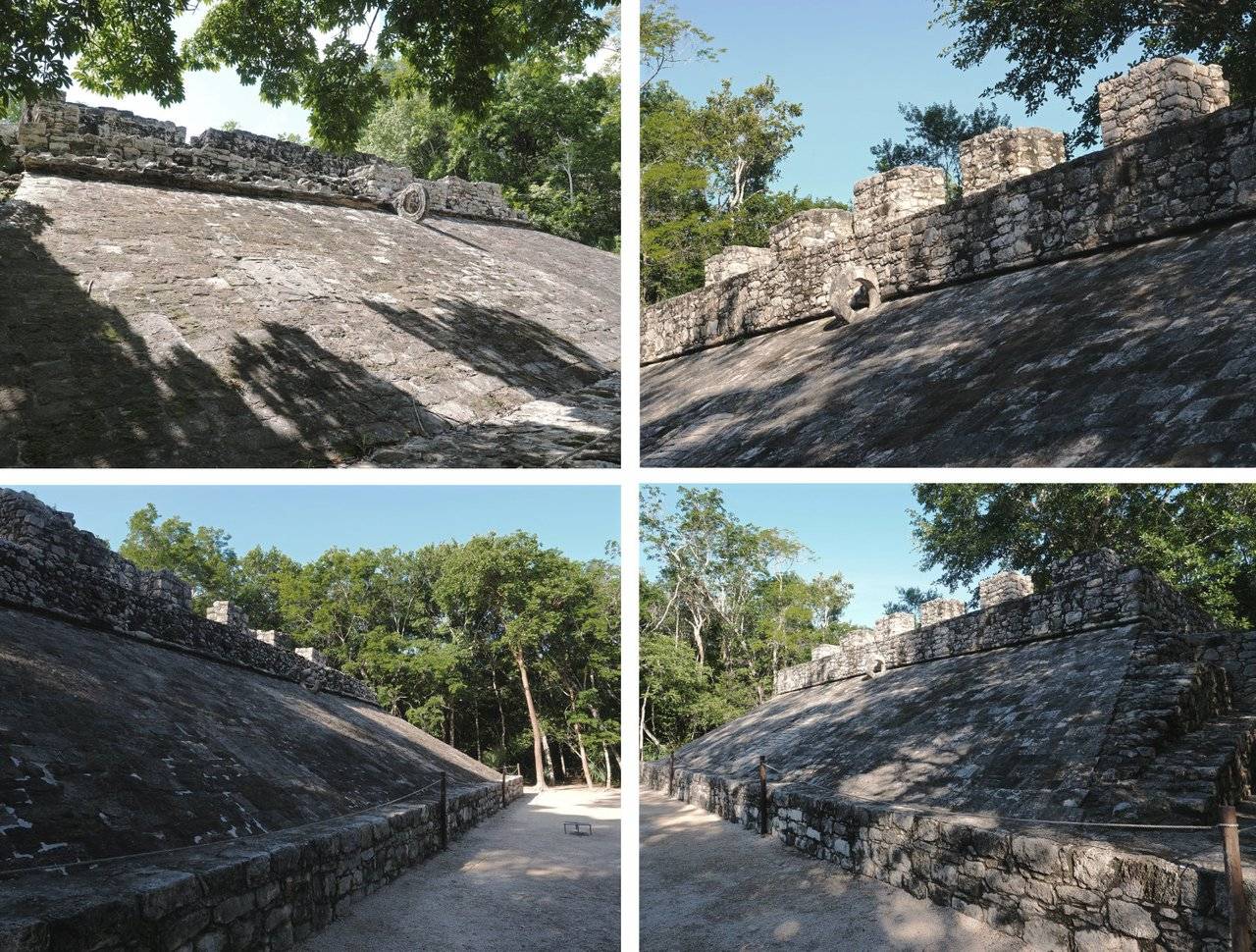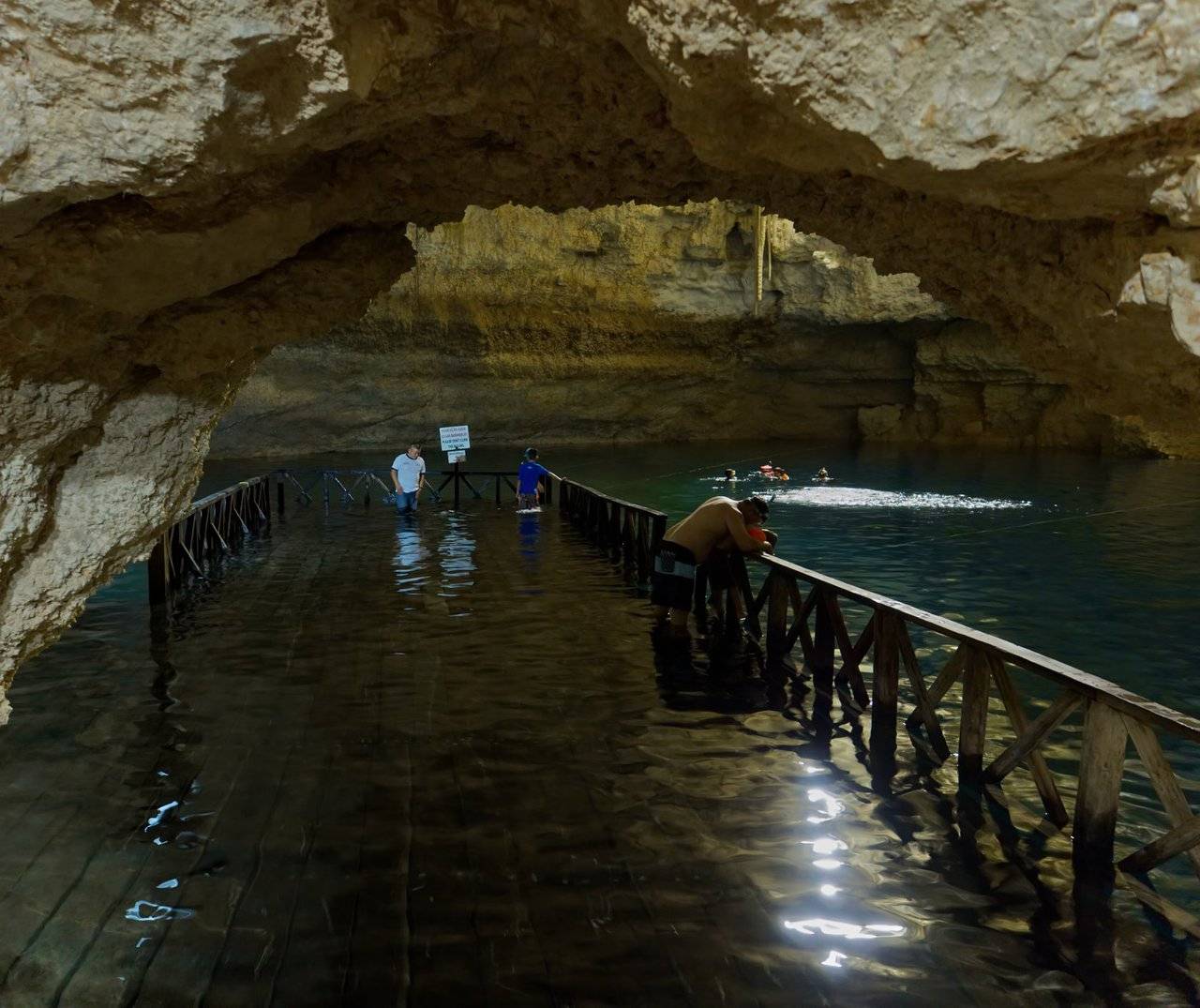COBA - An ancient Mayan city, buried deep within the Yucatan jungle ⛰
Earlier this week, we visited the ruins at Cobá in the state of Quintana Roo, México. It was a 45 minute drive from Tulum. We arrived early in the day, but boy was it hot hot hot! By 9am, we both had sweat dripping off us.
The cost to enter Cobá was 65 pesos each ($3.40 USD at the time). We also hired bikes to get around. The ruins in the area are a little spread out, so biking is definitely the way to do it. The bikes set us back 50 pesos each. Otherwise, if you'd prefer, you can hire someone to drive you around in a bicitaxi. Or walk... However you decide to get around, the surrounding jungle is dead set gorgeous.
Once we paid for our bikes, we made a beeline for the main pyramid, Ixmoja. We wanted to get there before the crowds arrived. After about a 15 minute bike through the tropical forest, it appeared before us.
Wow! It was stunning 😍
We approached slowly, to take it all in. After a couple of quick snaps at the bottom, we started the 120 step climb to the top. There's a rope running down the centre, so you can hold onto that if you're feeling uneasy. Each step is a little different from the last, so I zigzagged up to find a comfortable route.
We both reached the top and admired the view. Simply amazing! Standing on top of a beautiful pyramid, built hundreds of years ago. Is this real life? The dense, lush, green jungle spread out before us, all the way to the horizon. There were a few other people at the top, but I made sure to take a moment for myself. I'm not sure if it was the rock, the height, the jungle or all of it combined, but something about the place was really soothing. I felt a sense of calmness and softness there.
Ixmoja, also known as Nohoch Mul, is 42 metres tall. It was once the heart of the city. The base is believed to have been constructed between the years 250–550 AD. The temple on top was later added somewhere between 1200–1539. It's one of the few Mayan pyramids that you're still able to climb. Rumor has it that it will be closed off soon. Although it's not as popular as it's neighbours, Chichén Itzá and Tulum, it's getting increasingly busier there. The government may decide to close it off to the public if it becomes too unsafe or damaged.
Once we'd soaked it all up and couldn't bare the heat anymore, we made the walk back down. Unbeknownst to me, it's respectful to back down the pyramid. I'm sorry Mayans, my ignorant self did not know. Ben overheard one of the tour guides mentioning it as we passed.
For the next couple of hours, we explored the rest of the ancient city. There are roads, also known as sacbés, that connect you between ruins. They're the same roads that were once used by the Mayans. One of the sacbés in the area runs nearly 100km from the base of the Nohoch Mul pyramid. As you make your way along the road, you can't help but notice some of the temples that haven't been uncovered yet. Archaeologists estimate that Cobá contains more than 6500 structures! Only a few have been excavated and restored. I can imagine it would be quite the job.
Archaeologists have also found five Pok-a-Tok playing fields at Cobá. It was a game played by the ancient civilisation. The object of the game was to throw a solid rubber ball through a small stone ring, more than six metres above the ground. But, there's a catch! You're not allowed to use your feet or hands... Only elbows, knees or hips!
By around 10am, the crowds started to pour in. After seeing most of the place, we decided to leave. We'd already hired a taxi driver for the day and he was kindly waiting for us in the carpark.

Ready to Blog & Earn?
With TravelFeed, easily start your own travel blog and earn as you go. It's the smart platform for travelers who want to profit from their passion. Create a free account
Next up, we visited Cenote Multun-Ha. Cenote means natural pit, or sinkhole. They're created when the porous limestone in the area collapses. There's a massive network of underground canals and caverns that run throughout the Yucatan Peninsula. Experts consider it to be the largest continuous cave system in the world. It stretches over hundreds of kilometres. It's believed that cenotes were sacred areas for the Mayans. Not only were they used for drinking water, but they also thought the cenotes were passages to the underworld. Mayans would often throw in precious gems, clothing and gifts for the Gods. They were apparently even used for sacrificial offerings.
You enter Cenote Multun-Ha by a narrow, spiral staircase. It's pretty much an 18 metre hole in the ground. Once you've reached the bottom, the cave opens up and the beautiful blue water of the cenote is revealed. The water in cenotes is generally crystal clear. You're required to have a shower before you enter to keep it that way. I have to say, it was pretty magical swimming inside a cave. There was a huge spotlight in the one we visited, but I couldn't help but think what it would be like without the light on. A bit scary I think... but I'm a wuss.
A bus load of people arrived while we were there and that was our cue to leave.
Don't Forget: Get Travel Health Insurance!
To make your trip a worry-free experience, TravelFeed recommends SafetyWing Nomad Insurance. It provides comprehensive health coverage while you travel, so you can focus on exploring, not the unexpected. Get a quote here
We made the 50km drive back to Tulum, enjoyed a delicious (but expensive for around here) meal at El Vegetariano and then kicked back for the rest of the day.
México has been such an interesting place to explore these last couple of weeks. I'm excited to visit more of the beautiful cenotes and also Chichén Itzá. I'll continue to bring you interesting facts about the places we visit, along with more of my snap happy, as tourist as it gets, photography.
Thanks so much for reading and following me on my adventures. I really appreciate you!

Travel Resources for your trip to Mexico
Recommended by TravelFeed
Flights: We recommend checking Kiwi.com to find the best and cheapest flights to Mexico.
Accomodation: Explore the best places to stay in Mexico on Booking.com, Agoda and Hostelworld.
Travel Insurance: Medical emergencies abroad can be pricey, but travel health insurance is not. We always use SafetyWing for affordable and reliable coverage.
Car Rental: For hassle-free car hiring, DiscoverCars is our trusted choice with a wide selection of vehicles.
Internet: Got an eSIM compatible phone? Airalo is perfect for reliable internet access during your trip. Just install it before you go, and you're set!
Day Trips & Tours: We recommend GetYourGuide for a variety of well-organized and enjoyable activities.
Travel Planner: Need a hand planning? Our free travel planner chatbot is your personal guide to Mexico. Chat now.
Disclosure: Posts on TravelFeed may contain affiliate links. See affiliate disclosure.
